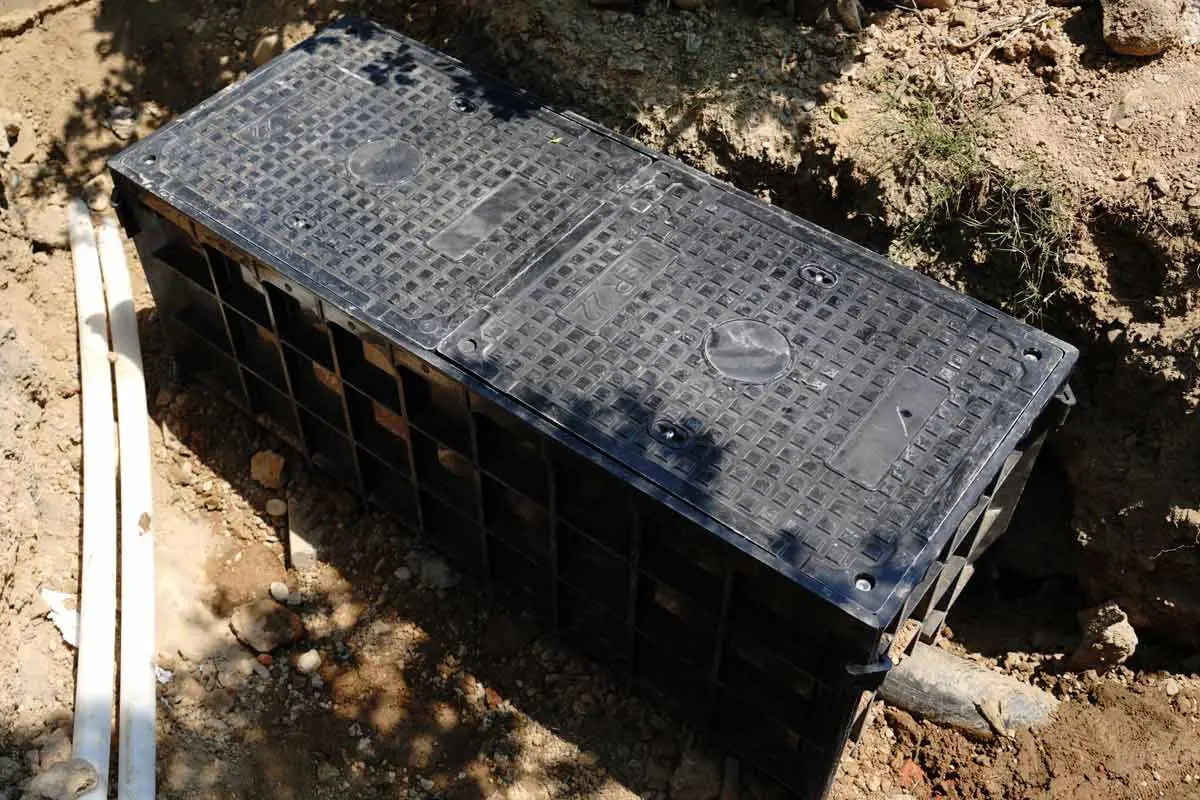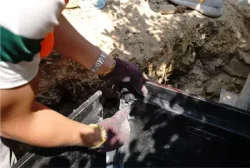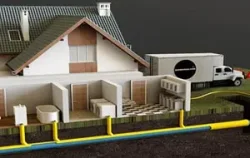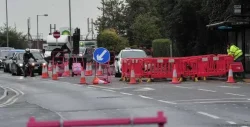2022-10-17
Find quality, comprehensive handhole for your fiber optic construction projects!
Fiber-optic cable is made from glass wire and rubber shell, and it cannot be found using standard metal-detecting equipment. And a handhole is an accessible vault used to manage the fiber optic cable and broadband connections.
The users for this include the management of organizations owning or installing fiber optic cable, as well as the actual techs doing the installation work. Handholes provide access and protection for the entire underground project and in conjunction with the other basic fiber, OSP fiber, design and testing, provide complete access management on most stages of fiber optic communications projects.
Handholes typically facilitate changes in direction. However, ducts may deviate from a straight line provided that individual lengths may be offset by no more than 35mm (1.4 inches), the offset is in the same direction, this to avoid creating S-bends and the maximum overall deviation between handholes does not exceed 15˚.
Spacers should be used when placing multiple ducts in a trench. They prevent ducts from twisting over and around each other. By keeping the ducts in straight alignment, cable jetting and/or pulling tensions will be reduced.
Handholes
Handholes shall be positioned as far away as possible from road junctions. Handhole must to be built according to prescribed dimensions and specifications.
Duct entry points into handholes must be drilled, without cracking or damaging the surrounding structure. Ducts shall enter and exit handhole in line with the direction of the route, for them to be coupled thru without any obvious effort, as a continuous duct.
Handhole external labeling should be done on the coping and NOT the lid, as lids can get damaged and be replaced. GPS coordinates for the location must be recorded. On completion of a handhole, the Contractor shall re-instate the area around the handhole to its original state or better. Handhole covers shall be finished flush with the surface area.
Benefits of Composite Handhole
Easy permission from the client.
Optional TIER 8, TIER15 or TIER22 confirmed handholes according to the traffic situations.
No need re-enforecd layers that brick manhole required

Handhole Installation
All duct entries and exits at the handholes must be a watertight seal. All ducts shall be coupled through. Ducts must be sealed with a watertight coupling cast or inserted into the wall of the handhole
Handhole /manhole covers must be watertight or must have at least a double seal. The composite covers should be 150 mm (6 inches) above natural ground level with the fill shaped back to natural ground level in a 2 m (6.5 feet) radius around the cover.
On paved sidewalks or verges, next to roads or streets, a cast in-situ concrete or asphalt backfilling shall be sloped to not impede pedestrian traffic. In these instances, the HH installation shall be such that it is not more than 50 mm higher than the surrounding paved sidewalk.
Handhole Inspection
Splice closures are secured.
Cable slack neatly stored and secured with no compromise to the bending radius.
Left tidy and clean.
Ducts sealed in-between walls.
End Caps fitted to empty ducts.
Used ducts sealed in-between cable and duct.
Cables and ducts are clearly labeled.
Infos and marks are clearly on the composite cover.
Locating disk in position.
The Install depth of fiber cable
Underground cables are pulled in the conduit that is buried underground, usually 1-1.2 meters (3-4 feet) deep to reduce the likelihood of accidentally being dug up. In extremely cold climates, cables may need to be buried at greater depths where their temperatures are colder and frost penetrates to greater depths. The process usually begins with digging a trench to bury the conduit which is generally PVC plastic pipe, sometimes with pre-installed innerduct (also called duct liner) with a pulling tape to facilitate the actual cable pulling process. Directional boring can also be used to avoid digging up the surface, for example in crossing streets or sidewalks. The cable should get through the side panel of the handhole.
Call before you Dig
Due to the disruptive nature of burying conduits, especially under roadways, many governments which grant permits for burying cable require the contractor to install extra conduits along the route to prevent having to dig again for any future cable installations. Since many cities have extensive conduits already buried for other services or may have required extra conduit to be buried during prior installations, the conduit may be available for pulling new fiber optic cables.
But it reminds us that digging safely is vitally important. The risk is not just interrupting communications, but the life-threatening risk of digging up high voltage cables or gas lines. There are several services that maintain databases of the location of underground services that must be contacted before any digging occurs, but mapping these should be done during the design phase and double-checked before digging to ensure having the latest data. At the same time as the cable is installed, markers like these indicating its location and ownership can also be installed.
Location of Services
The Contractor will generally be liable for any damages to existing services. It is the responsibility of the Contractor to locate all existing services. No excavation work should begin without having a copy of the approved wayleave/s on site. A utility representative can be asked to point out the position of a service and sometimes even oversee the work.
Cable Locators can find the exact path and even estimate the depth of the utility service. Investing in a ground penetration radar (GPR) is the best investment for fail-safe trenching. They are used to identify underground services and formations although readings can be affected by the presence of high voltage power cables.
Trenching Near Power Cables
Where excavations pass beneath curbs, guttering or driveways, rivers, trees, etc., proper support shall be provided for these structures until tunneling and backfilling is completed. Where no physical barrier exists, no duct or cable shall be laid within a distance of 600mm (24 inches) measured horizontally, nor cross within a distance of 300mm (12 inches) measured vertically from any high voltage power cable. Where this separation is compromised, the duct or cable must be separated.
Armored Cable Grounding (Earthing), Bonding and Surge Protection
The National Electrical Code (NEC) recommends that non-current carrying armor shields and metallic strength members be bonded and grounded. Typically, optical fiber cables do not carry electrical power, but the metallic components of a conductive cable are capable of transmitting current.(it minimizes the risk of unwanted electrical current that could potentially harm personnel, property, or equipment, especially thunder hazards).
Jinmeng fabricates general handholes of 17/30/24, 24/36/24, 30/48/36, and also customized handholes from rectangle to round, and versatile dimensions, If you have a question about a product, a comment for our team or want to schedule a conversation, just fill out the simple form below and we'll be in touch promptly!
How to Install The Telecom Pedestal and How to Drop the Fiber
The Beauty and Purpose of Hospital Manhole Covers Shows More Symbolic Strength




